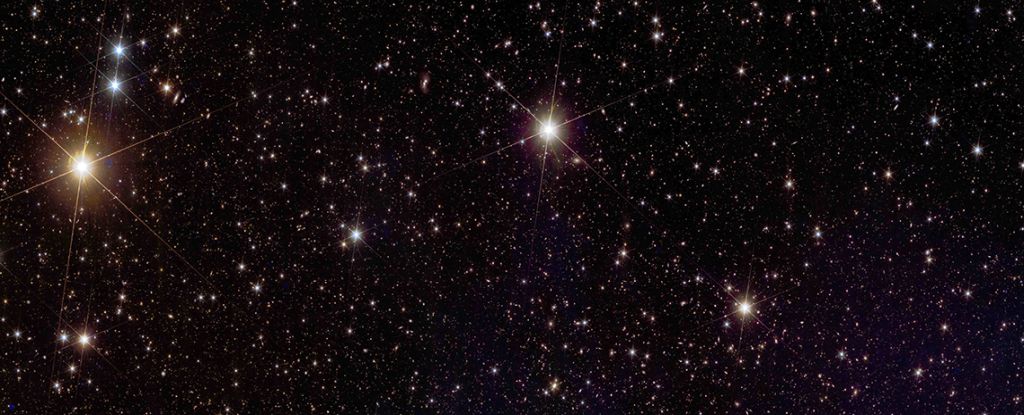The fabric of space and time is not exempt from the effects of gravity. Plop in a mass and space-time curves around it, not dissimilar to what happens when you put a bowling ball on a trampoline.
This dimple in space-time is the result of what we call a gravity well, and it was first described over 100 years ago by Albert Einstein’s field equations in his theory of general relativity. To this day, those equations have held up. We’d love to know what Einstein was putting in his soup. Whatever it was, general relativity has remained pretty solid.
One of the ways we know this is because when light travels along that curved space-time, it curves along with it. This results in light that reaches us all warped and stretched and replicated and magnified, a phenomenon known as gravitational lensing. This quirk of space-time is not only observable and measurable, it’s an excellent tool for understanding the Universe.
But a team of researchers have just found that the predicted curvature of space-time calculated using relativity does not always quite match up to what we observe, using data from the Dark Energy Survey that is currently mapping hundreds of millions of galaxies across the cosmos. That doesn’t mean there’s something broken – but it does suggest that there may be something out there that we haven’t accounted for.
“Until now, Dark Energy Survey data have been used to measure the distribution of matter in the Universe,” explains physicist Camille Bonvin of the University of Geneva in Switzerland. “In our study, we used this data to directly measure the distortion of time and space, enabling us to compare our findings with Einstein’s predictions.”
The Dark Energy Survey is an international collaboration that employs a powerful optical instrument mounted on the 4-meter Victor M. Blanco Telescope at the Cerro Tololo Inter-American Observatory in Chile. Its main mission, as the name suggests, is to study dark energy, the mysterious force that drives the accelerating expansion of the Universe.
To do this, the instrument has been surveying the Universe as deeply as it possibly can. This means that it sees light across a range of epochs, peering deep into the history of the Universe to galaxies whose light has traveled for billions of years to reach us.
Led by astronomer Isaac Tutusaus of the University of Toulouse in France, a team of researchers realized they could use this wealth of data to test the predictive power of Einstein’s physical description of the Universe. They specifically measured the distortions of space-time due to gravity wells, at four distinct epochs: approximately 3.5 billion years ago, 5 billion years ago, 6 billion years ago, and 7 billion years ago.
Then, they compared these measurements to what Einstein’s equations predict they should be. Interestingly, some of the measurements aligned neatly with the predictions – but not all of them.
“We discovered that in the distant past – 6 and 7 billion years ago – the depth of the wells aligns well with Einstein’s predictions,” Tutusaus explains. “However, closer to today, 3.5 and 5 billion years ago, they are slightly shallower than predicted by Einstein.”
frameborder=”0″ allow=”accelerometer; autoplay; clipboard-write; encrypted-media; gyroscope; picture-in-picture; web-share” referrerpolicy=”strict-origin-when-cross-origin” allowfullscreen>
The discrepancy is slight, but it could be important. It could mean, for example, that gravity wells have a slower growth rate more recently in the Universe. In addition, measurements of the expansion of space-time suggest that the growth of the Universe is speeding up, and has accelerated more in the recent past.
The discrepancy could, therefore, suggest a link between the acceleration of the Universe driven by dark energy and the slow growth of gravity wells during the same epoch. More observations will need to be conducted to confirm, and add to, the team’s findings.
“Our results show that Einstein’s predictions have an incompatibility of 3 sigma with measurements. In the language of physics, such an incompatibility threshold arouses our interest and calls for further investigations,” says physicist Natassia Grimm of the University of Geneva.
“But this incompatibility is not large enough, at this stage, to invalidate Einstein’s theory. For that to happen, we would need to reach a threshold of 5 sigma. It is therefore essential to have more precise measurements to confirm or refute these initial results, and to find out whether this theory remains valid in our Universe, at very large distances.”
The research has been published in Nature Communications.





